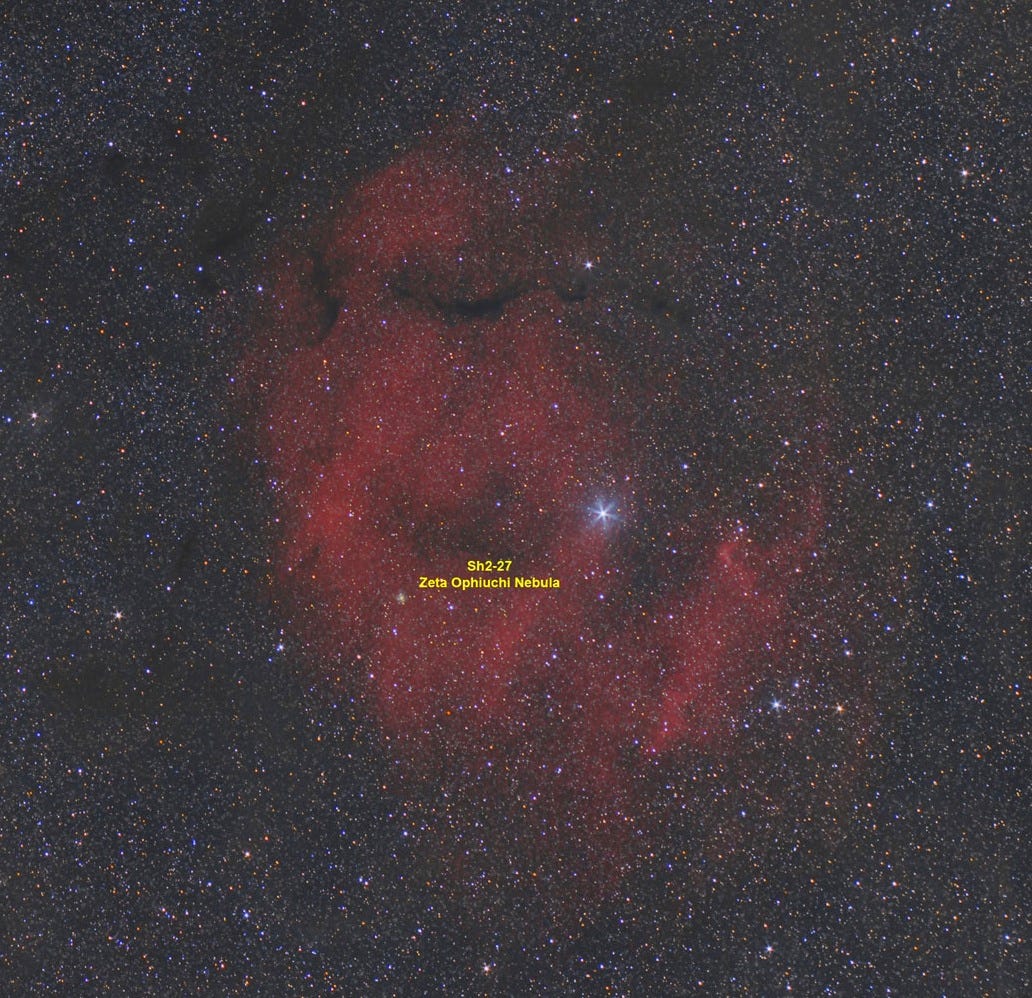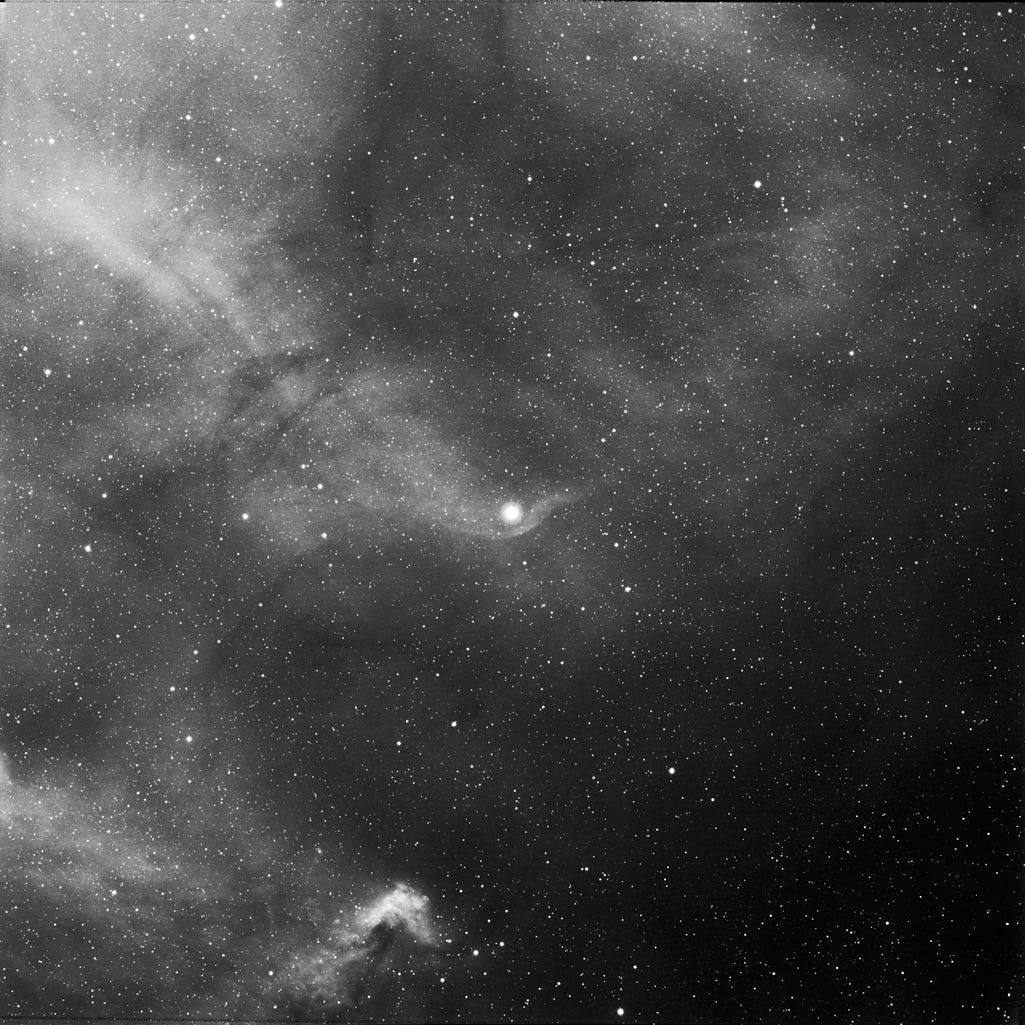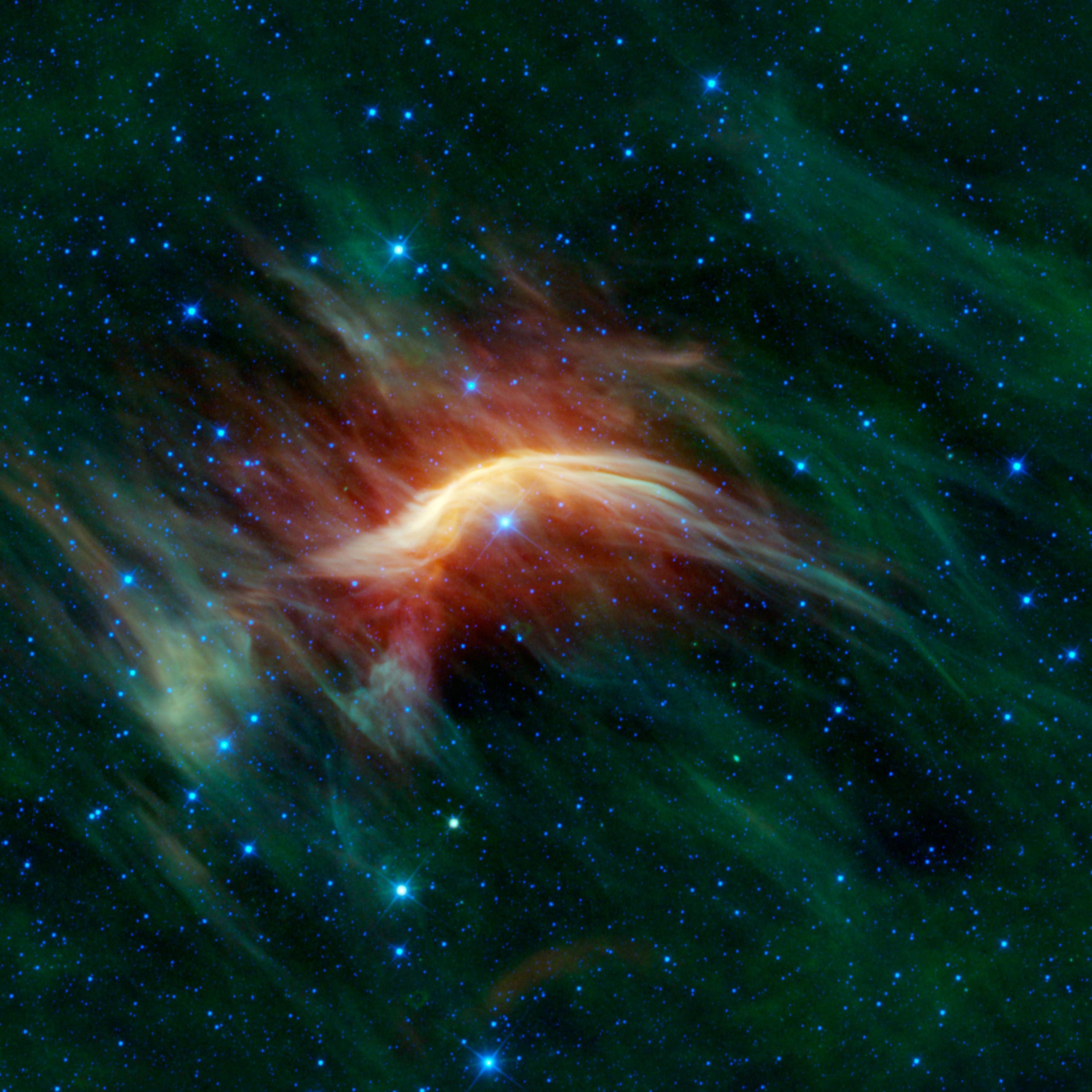Mostly Mute Monday: A runaway blue giant
Only 0.1% of all stars will die in a type II supernova. This one’s running away so fast, it’s literally a “shocking” sight.
“The thing is, when you see your old friends, you come face to face with yourself. I run into someone I’ve known for 40 or 50 years, and they’re old. And I suddenly realize I’m old. It comes as an enormous shock to me. ” –Polly Bergen




In the constellation of Ophiuchus, just north of the brilliant giant star Antares and (temporarily) the planet Saturn, the bright blue star ζ Ophiuchi is clearly visible to the naked eye. ζ Ophiuchi is very young — three million years old at most — and has only recently been ejected from the young cluster of stars from which it formed: the nearest group of O-and-B-class stars to the Sun. At 20 times the mass of the Sun, 8 times the radius and 80,000 times our star’s brightness, it’s quite a colossus.
What makes this star highly unusual, however, is that it streams through the interstellar medium at a whopping 24 km/s relative to all the other matter. Either ejected from a multi-body gravitational interaction or (more likely) kicked hard by the supernova that gave rise to pulsar PSR B1929+10, ζ Ophiuchi would actually appear much brighter if it weren’t obscured by the interstellar gas-and-dust that’s left over from its parent cluster’s formation. After another few million years of stellar evolution, ζ Ophiuchi will go supernova as well. Owing to its incredible sound-barrier-breaking speeds, a bow shock is created, with the star losing the mass of the Moon every four months.

Mostly Mute Monday tells the story of a single astronomical phenomenon or object in visuals, images, video and no more than 200 words.
Leave your comments on our forum, and support Starts With A Bang on Patreon!




